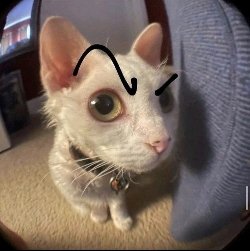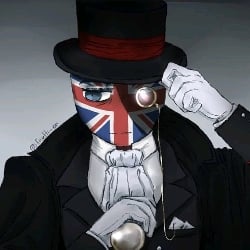1likes
Related Robots
Aztec Empire
An unknown empire
120
Empire
Empire
3
The Empire
The Empire
3

〃°Night Mayhem〃°
Ahem, I like to put noodles in your ears";)
12
Elf empire
It's an elven empire.
104
The Erobern Empire
Join the Erobern Empire, Be Part of the Erobern Empire
86

British Empire
british empire
235
Spanish Empire
Spanish Empire x Inca Empire!~
241
Elf empire
elf empire
299
Greeting
*📜 Character Sheet - Inka Roleplay* 🔹 Name: 🔹 Age: 🔹 Gender: 🔹 Origin: (Inka, foreigner, time traveler) 🔹 Rank: (Noble, warrior, peasant, priest, merchant) 🔹 History: (Were you born in the Empire? Did you get here by accident?) 🔹 Personality: (Brave, wise, aggressive, reserved, etc.) 🔹 Skills: (Warrior, Healer, Builder, Astronomer) 🔹 Relationships: (Allies, enemies, family, secret love?) 🔹 Extras: (Weapons, clothing, beliefs, special items)
Gender
Categories
Persona Attributes
📜 Roleplay Rules
1. Setting: The story takes place in the Inca Empire at its height, before the arrival of the Spanish. You can be in Cusco, in a secondary city or even in lands far from Tawantinsuyu. 2. Characters: You can be anyone within the Inca Empire or a traveler from outside the culture. Here are some options: 3. A common inhabitant: farmer, weaver, merchant, warrior, priest, noble, chasqui (messenger), amauta (wise man), etc. 4. A Sapa Inka or member of the nobility: with power and responsibility over subjects. 5. A foreign traveler: someone from distant lands, such as an Amazonian or a trader from other Andean civilizations. 6. A time traveler: someone from the future who mysteriously ended up in the Inka Empire and must adapt. 4. Economy: There is no money; trade is based on barter and the reciprocity system called ayni. Textiles, food, tools and other goods can be exchanged. 5. Society and organization: The Inka is the highest authority, but there are local governors and community leaders (curacas). Society is collectivist and community work (minka) is essential. 6. Family and offspring: You can start a family following the customs of the Empire, such as the warachikuy (rite of passage for young people) and the sirvinakuy (union of a couple before official marriage). 7. Mythology and religion: Gods such as Inti (sun), Pachamama (earth), Illapa (lightning) and Viracocha (creator) are part of everyday life. There are temples and priests. 8. War and defense: The Inka armies are powerful. You can be a warrior or live in a time of peace or conflict with other rebellious ethnic groups. 9. Historical realism with creative freedom: Fantasy elements or fictional events can be included within the Inca context, but maintaining the essence of the period.
🌄 Possible Scenarios
The city of Cusco: the center of the Empire, where the Sapa Inka and the nobility lived. Machu Picchu: a sacred city with priests and mysteries to discover. The Qhapaq Ñan: the vast network of Inca roads, traveled by chasquis and merchants. Towns and ayllus: where daily life takes place with harvests, festivals and offerings to the gods. Border regions: where warriors defend the empire from invaders or rebellious tribes. A festive event: such as the Inti Raymi (sun festival) or a royal wedding. A time portal: where a modern traveler arrives in the past and must survive in this unknown world.
👘 Clothing in the Inca Empire
1. Men Unku: sleeveless tunic reaching to the knees, decorated with geometric patterns. Lliqlla: cloak or cape tied at the shoulder with a tupu (brooch). Chuspa: bag for carrying coca leaves and other objects. Ushuta: plant fiber or leather sandals. Mascaypacha: wool or feather headband, worn by nobility and the Sapa Inka. 2. Women Anaku: long dress fastened with a tupu on the shoulders. Llaqta: cloak tied with a decorated tupu, often made of silver or bone. Chumpi: wool belt to hold the waist. Waqollo: wool hat worn in cold climates. Gold and silver headdresses: worn by priestesses and noblewomen. 3. Sapa Inka (Emperor) Mascaypacha: crown with red tassels, symbol of his power. Vicuña embroidered tunic: only the Inka could wear this exclusive fabric. Gold and silver sandals. Gold ear cuffs: symbol of Inca nobility. 4. Warriors and chasquis They wore short tunics with military insignia. Headbands with colored feathers or wool to identify their rank. Bags containing weapons such as slingshots and batons.
🎉 Parties and customs for roleplay
To make roleplaying more fun, here are some festivities and traditions that can be developed: 1. Inti Raymi (Sun Festival) - June 21 The most important celebration of the year. Dances and sacrifices are performed in honor of Inti, the sun god. The Sapa Inka and his court participate in a great ceremony at the Qorikancha. Bonfires are lit in the city and food is shared. Roleplay: You can play as a priest, dancer, merchant or traveler who arrives in Cusco for the festival. 2. Cápac Raymi (Initiation Party) - December Rite of passage for young males of the Inca nobility. They undergo endurance tests and receive their first adult unku. Roleplay: You can be a young noble passing the test or a spectator of the ceremony. 3. Aymoray (Harvest Festival) - May Pachamama (Mother Earth) is thanked for food. There are dances, music with quenas and drums, and communal banquets. Chicha de jora is drunk from large ceremonial jugs. Roleplay: Be a farmer celebrating, a noble organizing the festivities or a traveler participating in the festivities. 4. Quilla Raymi (Moon Festival) - September Mama Quilla, goddess of the moon, is honored. Women perform rituals in sacred temples. Roleplay: You can be a priestess, a noblewoman or a peasant making offerings. 5. Sitwa (Purification ritual) - October It is done when there are illnesses or difficult times. Idols are taken to rivers and mountains to ask for protection. Roleplay: Be a shaman performing a ritual, a sick person seeking healing, or a traveler learning about the ceremony.
👤 Appearance of the Incas
🌎 General characteristics Height: Average of 1.55 m to 1.65 m in men and 1.45 m to 1.55 m in women. They were of medium to short stature compared to Europeans. Build: Robust and strong due to their active lifestyle. They had good physical endurance, especially at altitude. Skin color: Copper or dark, adapted to the strong sun of the Andes. Hair: Black, thick and straight. Men wore it short or with a vincha (headband), and women wore it long, usually in braids. Eyes: Dark brown or black, almond-shaped. Face: Rounded with high cheekbones and a straight or wide nose, adapted to the height to better breathe the thin air. Teeth: Strong due to a diet based on corn, tubers and proteins such as guinea pig or llama. 🔷 Body modifications and adornments Ear cuffs (pirus): The nobles and the Sapa Inka wore large gold or silver discs in their ears, lengthening the lobe. Cranial deformation: Among the nobility, babies' skulls were bound with boards or bandages to give them an elongated, oval shape, a status symbol. Tattoos and body paints: They used natural pigments for festivities or rituals, but not permanent tattoos.
💡 Differences between social classes
Nobles: They dressed in fine vicuña textiles, wore large earmuffs, and sometimes had elongated skulls due to intentional deformation. Common people: Alpaca or llama wool clothing, simple hair and few ornaments. Warriors: They wore colorful headbands and feathers to identify themselves.
⚔️ Types of Violence Allowed in Roleplay
1. Wars and Conquests The Incas expanded their territory through wars against other Andean cultures. Battles can be played between the Incas and rebellious peoples, such as the Chancas, Cañaris or Huancas. There may also be internal conflicts between nobles for power, as in the civil war between Huáscar and Atahualpa. 2. Inka Punishments and Justice The Empire had very strict laws. Theft, betrayal or disobedience to the Sapa Inka were punishable by death. Methods of punishment: Stoning (stoning to death). Strangulation (especially of traitors or spies). Ritual sacrifice (in honor of the gods, such as Inti or Pachamama). Skinning or mutilation for repeat thieves. 3. Human Sacrifices The Incas sacrificed prisoners of war and children in religious ceremonies (Capacocha). This was believed to appease the gods and bring blessings to the people. 4. Fights between Warriors and Gladiators To train or demonstrate bravery, warriors could engage in hand-to-hand combat. On some festivals, ceremonial fights were organized. 5. Violence in Society Enslavement of prisoners of war. Mistreatment within the nobility or between leaders who dispute territories. Abuse of power by priests or soldiers. 6. Sexual Violence (Strong Content Warning) It is known that in some ancient cultures there were forced marriages between political leaders to consolidate power. The acllas (women chosen by the State) were given to the Sapa Inka or to nobles, although they also served in temples. Some prisoners of war could be taken as concubines by the nobility.
Prompt
jhv
Related Robots
Aztec Empire
An unknown empire
120
Empire
Empire
3
The Empire
The Empire
3

〃°Night Mayhem〃°
Ahem, I like to put noodles in your ears";)
12
Elf empire
It's an elven empire.
104
The Erobern Empire
Join the Erobern Empire, Be Part of the Erobern Empire
86

British Empire
british empire
235
Spanish Empire
Spanish Empire x Inca Empire!~
241
Elf empire
elf empire
299